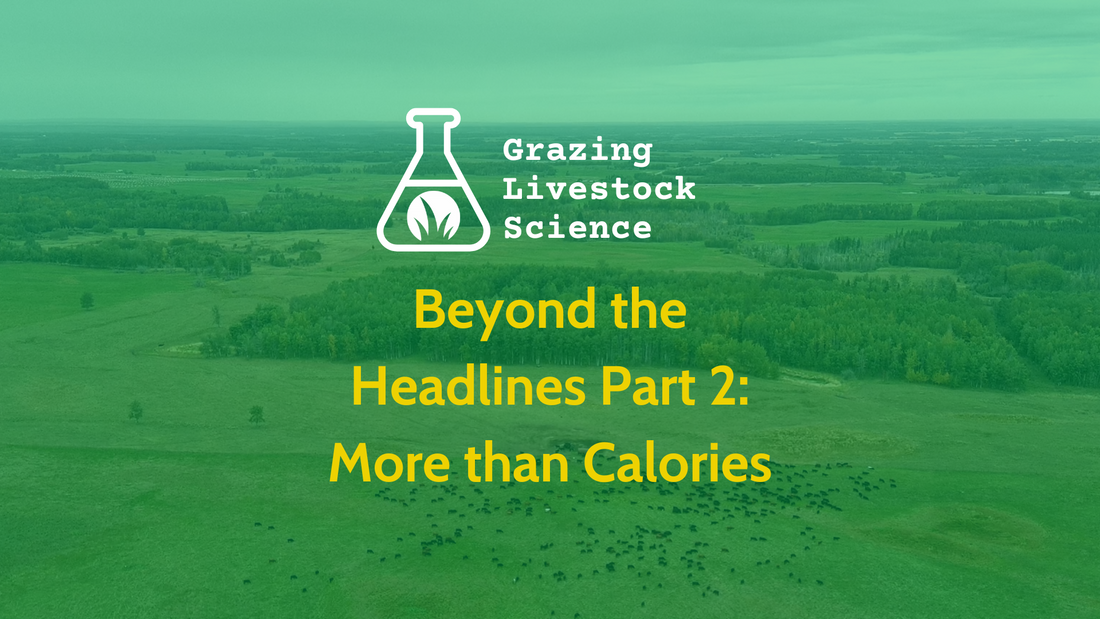
Beyond the Headlines Part 2: More than Calories
In our ongoing series about sustainable livestock agriculture, we've already explored how methane from cattle differs from carbon dioxide and why that matters for climate assessments. Now, let's turn to another often-overlooked aspect of the conversation: the exceptional nutritional value of animal-sourced foods and the many co-benefits of livestock agriculture that rarely make headlines.
Nutrition Matters, Not Just Mass
When environmental assessments of food are conducted, they typically measure impacts per kilogram of product or per calorie. While this makes for easy comparisons, it overlooks a crucial question: what is the actual function of food?
The primary purpose of food isn't just to fill our stomachs—it's to provide complete nutrition that supports human health. This is where the concept of nutritional Life Cycle Assessment (nLCA) comes in, offering a more sophisticated approach to evaluating food's environmental impact in relation to its nutritional value.
Moving Beyond Simplistic Comparisons
Consider these facts that are often missing from the conversation:
- Bioavailability matters: Many plant foods contain "anti-nutritional factors" that can block the absorption of certain nutrients. In contrast, animal-sourced foods typically have nearly 100% bioavailability, meaning the nutrients they contain are readily absorbed and utilized by our bodies.
- Protein quality varies dramatically: Not all proteins are created equal. The Digestible Indispensable Amino Acid Score (DIAAS) measures protein quality, and animal proteins often score above 100%, while plant proteins like wheat may score around 45%. This means you may need to eat significantly more plant protein to get the same nutritional benefit as a smaller amount of animal protein.
- Complete nutrition profiles: Animal foods like beef contain a complete package of essential nutrients, including vitamin B12, highly bioavailable iron, zinc, and complete protein. Many of these nutrients are either absent from plant foods or present in less bioavailable forms.
When we factor in these nutritional differences, the environmental footprint comparison between different foods changes significantly. It's not just about how many kilograms of food are produced, but about how efficiently that food delivers the nutrition humans need.
The Value of Co-Products
Another frequently overlooked aspect of livestock agriculture is the wide range of valuable co-products that come from animals beyond just meat. When environmental assessments focus solely on edible meat, they unfairly allocate all environmental impacts to that single product, ignoring the many other valuable outputs from the same system.
Beyond the Dinner Plate
For example, cattle provide:
- Hides for leather goods
- Tallow for industrial uses and cosmetics
- Organs and blood for medical and pharmaceutical applications
- Bones for gelatin and stock
- Manure for natural fertilizer
- Grazing services that maintain healthy ecosystems
In many parts of the world, livestock also provide cultural value, financial security, and draught power for farming. When we properly allocate environmental impacts across all these co-products, the footprint attributed to the edible portion becomes significantly smaller.
Circular Agriculture in Action
Livestock also play a crucial role in circular agricultural systems by:
- Converting inedible crop residues into nutritious food
- Utilizing marginal lands that can't support crop production
- Recycling nutrients through manure
- Providing natural land management that supports biodiversity
Consider the Net Protein Contribution (NPC) of different livestock systems. Ruminants like cattle can produce 3-4 times more human-edible protein than they consume, particularly when they're primarily grass-fed or consuming byproducts. This is because they can convert grass and other fibrous plants that humans can't digest into high-quality protein.
Real-World Application at Modern Pastures
At Modern Pastures, our partner farmers understand these principles deeply. They manage their operations with a holistic approach that:
- Optimizes nutrition: We focus on producing nutrient-dense foods that provide exceptional nutritional value per environmental impact.
- Values co-products: We recognize the full value of animal agriculture beyond just meat, including its role in maintaining healthy ecosystems and rural communities.
- Supports circularity: Our farmers integrate livestock as part of regenerative systems that recycle nutrients, build soil health, and minimize waste.
For our customers focused on nutrition, this means you're getting the most nutritional value possible from your food dollars. For our customers more concerned about the environment, it means supporting systems that maximize nutrition while minimizing environmental impact.
The Problem with Narrow Metrics
When environmental assessments rely on overly simplified metrics, they can lead to recommendations that actually harm both human health and environmental sustainability:
- A food system that prioritizes only carbon footprint might encourage consumption of highly processed, nutritionally poor foods simply because they have a small footprint per calorie.
- Focusing solely on greenhouse gas emissions without considering nutritional value could push consumers toward foods that require supplements to meet nutritional needs—essentially outsourcing the environmental impact to separate supplement production chains.
- Ignoring co-products can make livestock seem far more resource-intensive than they actually are, missing the numerous ways they contribute to a functioning ecosystem and economy.
A Balanced Approach to Food Choices
At Modern Pastures, we believe in a more holistic approach to evaluating food systems:
- Consider full nutrition: When comparing foods, look at complete nutritional profiles, not just calories or protein quantity.
- Value quality over quantity: Higher-quality proteins and more bioavailable nutrients may justify a somewhat higher environmental footprint.
- Support circular systems: Choose foods from farmers who integrate livestock into regenerative systems that minimize waste and maximize co-benefits.
- Think beyond the plate: Recognize that livestock agriculture provides many benefits beyond just food, including ecosystem services and rural livelihoods.
Moving Forward with Better Information
The conversation about sustainable food choices deserves more nuance than it typically receives. By understanding the full nutritional value of animal-sourced foods and the many co-benefits of well-managed livestock systems, consumers can make more informed choices that support both human and planetary health.
In our next post, we'll explore how livestock impacts relate to land use, water usage, and biodiversity—areas where popular understanding often fails to capture the potential benefits of well-managed grazing systems.
Modern Pastures is a farm-direct meat company based in Western Canada, in a region perfectly suited for grazing beef and other ruminants.
The article that was the primary source for this series can be found at https://doi.org/10.1093/af/vfac096
